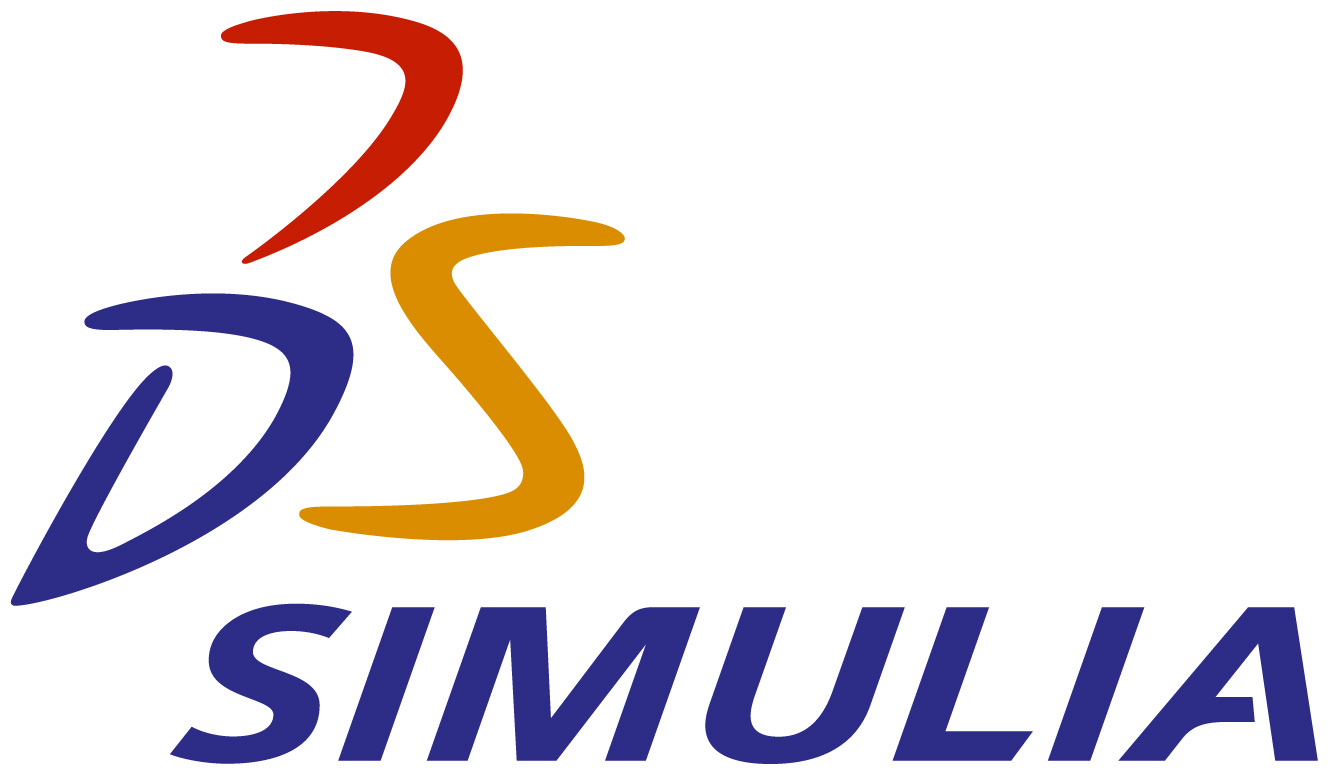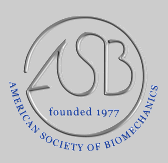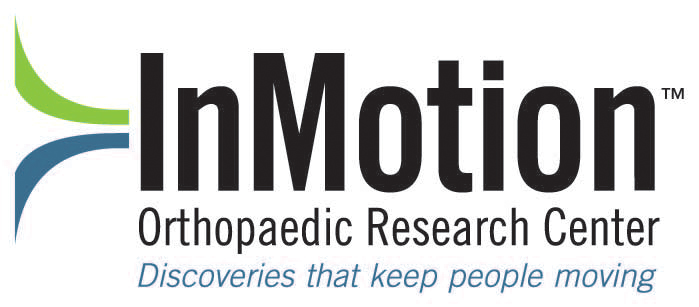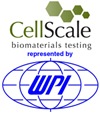|
Topics:
These topics are indicative, and new/innovative advances in biomechanics and
computational simulation are welcome. Emphasise on validation techniques with
input from life sciences and biological data are prioritised as are
interdisciplinary links between medical technology, biosciences, computer
science and the clinical community. An open invitation is also provided to
those who wish to organise special sessions in a selected area of biomechanics.
These special sessions will typically consist of six papers of 20 minutes
duration each. If you wish to organise and chair a special session please
contact the organisers.
-
Orthopaedics Systems, Implants and Medical Devices, Pre-Clinical Assessment Techniques
- Computational Cell and Molecular Biomechanics, Cell and Extra-Cell-Matrix Interaction Mechanobiology, Tissue Adaptation, Fracture Healing and Transport
Phenomena
- Motion and Gait Analyses, Kinesiology, Patient-specific Musculoskeletal
Modelling, Simulation-Based Methods for Calculating Musculoskeletal Forces,
Integrating Modelling/Experiments to Study Clinical Problems (osteoarthritis,
osteoporosis), Human Locomotion, Work Related Musculoskeletal Injuries and
Sports Biomechanics
- Dental Biomechanics, Implants, Craniofacial Reconstruction and Surgical
Simulation, Orthodontics, Endodontics
- Joint/Spine/Knee Biomechanics, Interveretebral Disc Models, Biomaterials,
Muscle-ligament interaction and rehabilitation
- The VPH project http://vph-noe.eu, Imaging and Visualization, Subject Specific
Models, Simulation of Near Real-Time Reconstruction in 3-D, Imaging in
Robotics, Virtual Surgery, Diagnostics and Organ Planning, Imaged Based Meshing
for Structure Characteristics
- Mechanobiology, Cytoskeletal Systems, Computational Biology, Medical and
Bioinformatics
- Theoretical Biomechanics, Soft Tissue Modelling and Constitutive Laws for
Biological Structures Including Skin, Ligaments, Tendons, Muscles and Organs,
Validation/Identification of Tissue Structures
- Growth, Multiphysics/Multiscale Remodelling for Physiological Systems and
Non-Deterministic Techniques
- Biofluids and Fluid/Structure Interaction, CFD for Biodesign,
Modelling of Cardiovascular Access, Respiratory and Artificial/Hybrid Organs,
Haemodynamics, Drug Release and Biomembranes
- Cellular and Tissue Engineering/Regeneration, Scaffold Design, Computation of
Porous Scaffold Properties and Scaffold Design to Simulate Material Degradation
and Tissue Ingrowth, Multi-Level and Hierarchical Systems
- Simulation in Ergonomics, Models for Hand, Grip and Finger Function, Footwear
Biomechanics, Contact Modelling of the Skin-Object Interface
- Neural IT, Modelling of Brain Function and Structure
- Computer integrated surgery, computer generated haptics, multi-modal image
registration and overlay systems for patient management
Mini-Symposium
The Integration of Medical
Imaging with CAD/FEA/CFD/RP.
Chair: Panos Diamantopoulos. Sponsored by
Materialise
During the last decade, computational techniques have found a profound role
in biomechanics.
The use of medical imaging data in CAD/FEA/CFD and Rapid Manufacturing
environments has been established, with many interesting applications. In the
years to come, these techniques will be further developed and it is almost
certain that will contribute to a major clinical tool. This scientific session,
sponsored by Materialise, continues the success of the previously organised
workshops in past CMBBE conferences.
The aim is to demonstrate and discuss current applications from the academic
point of view, but also predict and present the technology of the future.
SPECIAL SESSIONS FORUM
Abstracts are invite for these special sessions which are chaired by experts from these fields. These areas are considered to be innovative, novel and of prime importance for the next generation of research and commercial development
and to advance technology translation in healthcare.
SS1: Integrating Biology and Biomechanics: Soft and Hard Tissue Structures
Chairs: Brian Walker, Arup UK, Renato Natal Jorge, University of Porto, Portugal
SS2: Linking Imaging, Measurements, Modelling and Biology in Knee Biomechanics
Chairs: Debbie Mason and Cathy Holt, Cardiff University, UK
SS3: Spine and Interveretebral Disc Biomechanics
Chairs: Richard Hall, Leeds University, UK and Philippe K Zysset, TU of Vienna,
Austria
SS4: Identification of Biomaterial Parameters using Inverse FE
Chairs: Sam L Evans, Cardiff University, UK and Stephane Avril, INSERM,
France
SS5: The Virtual Physiological Human (VPH) project http://vph-noe.eu/ and Imaging in Biomechanics
Chairs: Marc Thiriet, France and Joao Tavares, University of Porto, Portugal
SS6: Patient-Specific Methods and Models in Cardiovascular Biomechanics and Pulmonary Biomechanics
Chair: Charley Taylor, Stanford University, USA and Pascal Verdonck, University
of Ghent, Belgium
SS7: Computational Cell and Molecular Biomechanics, Cell and Extra-Cell-Matrix Interaction
Chair: Glen Niebur, University of Notre Dame, USA, Aleš Iglič, University of Ljubljana, Slovenia
SS8: Motion Analyses and Musculosketal Modelling
Chairs: Marcus Pandy, University of Melbourne and Cathy Holt, Cardiff University
SS9: Computational Modelling of the Brain, its Vasculature and Function
Chair: Tim David, University of Canterbury, Christchurch, New Zealand
SS10: Zimmer Special Session on Upper Limb Biomechanics
Chair:
Andrew Hopkins, Zimmer, Switzerland
SS11: Image-based Simulation for Biomechanics Applications
Chair:
Philippe Young, Simpleware Ltd.
Integrating Biology and Biomechanics: Soft and Hard Tissue Structures
The session focuses on modeling biological structures concentrating on hard and
soft tissues. Problems associated with defining of such structures including
constitutive models, measurements of material properties and integrating
biological processes are considered. Examples include simulation of muscle,
skin, tendon and cartilage etc.
Linking Imaging, Measurements, Modelling and Biology in Knee Biomechanics
Abnormal weight bearing on joints leads to diseases such as osteoarthritis whereas normal loading is essential to maintain a healthy skeleton. The forces associated with normal/abnormal loading and the way in which these forces influence joint function and pain are largely unknown. The modelling of mechanical loading patterns within normal/diseased human knees can inform clinical intervention and rehabilitation strategies and improve patient care. The linking of signalling events through specific mechanical stimuli can assist in future identifying mechanically regulated biomarkers of joint degeneration and associated therapeutic targets. This session focuses on advances in techniques which provide real world data and allow accurate patient specific models of the intact, diseased and prosthetic knee for correlation with biological studies. Topics include the imaging and measurement of knee anthropometrics including bone, cartilage and soft tissues; kinematics, contact stresses and dynamics and the mechanical loading associated with surgical intervention (HTO and TKR), and also with specific serum and synovial fluid biomarkers.
Spine and Interveretebral Disc Biomechanics
This session will focus on vertebral augmentation, development of spinal
devices and fixation systems, disc replacement and the biomechanics of the
natural spine. Presentations will also be given by members of the EU funded
Marie Curie Initial Training Network in spinal fracture ‘SpineFX’ which involves
European partners from both the university and commercial sector. Here the
mechanics of spinal fracture and enhancement techniques for treatments used to
combat pain and disability will be considered. Presentations are also welcome in
other innovative techniques in spine research.
Identification of Biomaterial Parameters using Inverse FE
This session will focus on the problems of measuring the mechanical properties of
biological materials using an inverse approach where the material properties in
a model are adjusted to match experimental measurements. Topics include
experimental techniques, methods for rapid evaluation of models, optimisation
algorithms and analysis of the uniqueness and uncertainty of the measured
properties as well as complete studies.
The Virtual Physiological Human (VPH) project http://vphop.eu/ and Imaging in Biomechanics
This session will focus on patient-specific modeling and simulation of various body systems functioning in the framework of the Virtual Physiological Human (VPH) calls of EU FP7. Nowadays, multistage investigations aim at tackling time and length scales involved in the
behaviour of biological systems (e.g., blood circulation, ventilation, digestion, renal purification, musculoskeletal apparatus,
tumour growth, etc.) that sense, react, and adapt to environmental loadings. Topics include
bio mathematical and biomechanical models as well as
data mining for input parameters and experiments for validation. Structure segmentation, tracking, matching, alignment/registration, 3D reconstruction and motion and deformation analysis in medical imaging will be considered.
Patient-Specific Methods and Models in Cardiovascular Biomechanics and Pulmonary Biomechanics
Functional biomedical imaging through computational fluid dynamics CFD and finite element analysis FEA provides a new technique to diagnose and treat cardiovascular and pulmonary pathology. Also medical device manufacturers and pharmaceutical industry benefit from this new approach to assess hydrodynamics, efficacy, performance of new devices and drugs in a virtual patient population. The session will focus on the state of the art developments in this innovative biomedical field.
Computational Cell and Molecular Biomechanics, Cell and Extra-Cell-Matrix Interaction
Many cells are mechanosensitive, responding to stimuli such as stretching, shear stresses, bending and pressure. These signals have been used to stimulate tissue engineering constructs and to study cellular response to disease conditions. Computational modeling is providing a means to study these interactions in greater detail. The session will focus on techniques for constructing fluid and solid mechanics models of cell/matrix interactions, statistical mechanics models of cell membrane, multi-scale frame works for modeling from cell to tissue level, and applications to scientific hypotheses. Examples include: Microscale modeling of cells or the cytoskeleton, Models incorporating cell migration, cell shape transformation, formation of membrane micro- and nano-domains, budding of cell membrane, differentiation, or activation for tissue formation or degradation, Multiscale techniques and Modeling of tissue engineering or bioreactor constructs.
Motion Analyses and Musculosketal Modelling
This session will focus on the techniques and applications of motion analysis and musculoskeletal modelling. Kinematic, kinetic and dynamic models of human and animal locomotion provide valuable data and allow a greater understanding of the function of healthy and diseased joints and the dynamic control of motion. Measurement methods are challenging as they are prone to error and dynamic models require complex optimisation techniques. Topics include experimental techniques involving imaging, motion capture and EMG, optimisation and dynamic modelling and validation and application of such models to medical engineering problems such as implant design and surgical intervention, gait analysis and movement classification, orthotic and prosthetic application and animal locomotion.
Computational Modelling of the Brain, its Vasculature and Function
This session will present reviewed papers on the computational modelling of
the brain, it's function, blood supply , regulation and imaging. Submissions
will be taken on areas of interest such as new numerical algorithms, imaging
protocols, physiological simulation in cerebro-vasculature and other related
areas.
Zimmer Special Session on Upper Limb Biomechanics
The upper limb presents unique challenges to health care providers, and is
currently one of the fastest growing markets in orthopaedics. New and innovative
prosthetic options for the shoulder, elbow, wrist and finger joints are emerging
globally, and a sustained focus on the techniques used to analyse, describe and
optimise the performance of these complicated joints is necessary to ensure
their continued development. Submissions relating to the upper limb in the areas
of FEA, kinematics, motion capture, prosthetic design, prosthetic performance,
musculoskeletal anatomy and tribology are welcome.
Image-based Simulation for Biomechanics Applications
This special session will look at issues surrounding 3D reconstruction from
radiology images, and in using 3D image data to generate Rapid
Prototyping, CAD, and Finite Element models. Papers are invited in
which image-based techniques have been used for the generation of
analysis models for any biomechanical applications. A frank discussion
of both the opportunities and the challenges faced when modelling
biomechanical systems using image data will be encouraged.
|
|














